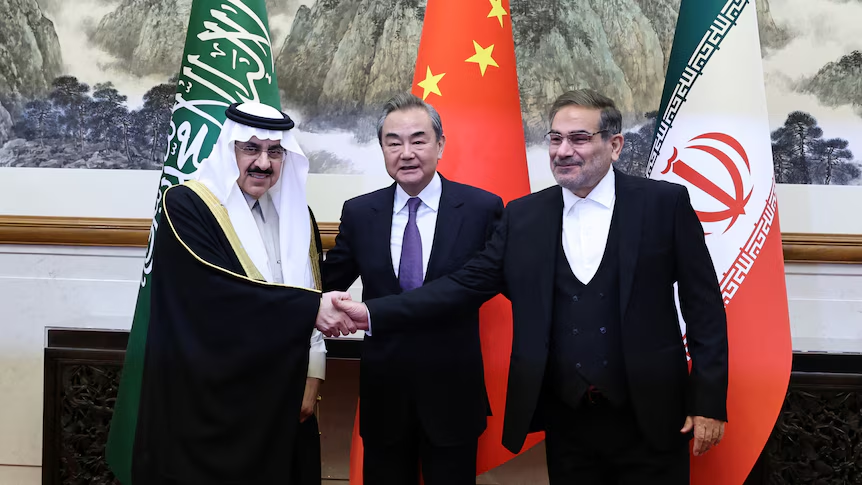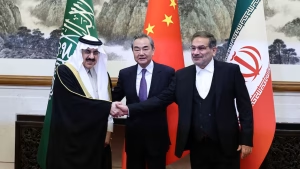The Persian Gulf, a strategic waterway in the Middle East, plays a pivotal role in global economics, regional security, and geopolitical dynamics. Bordered by eight countries—Iran, Iraq, Kuwait, Saudi Arabia, Bahrain, Qatar, the United Arab Emirates (UAE), and Oman—the Persian Gulf is a hub of energy exports, maritime trade, and political influence.
This article explores the geopolitical significance of the Persian Gulf, focusing on:
-
Economic Impact – Oil and gas dominance, trade routes
-
Security Challenges – Military presence, regional conflicts
-
Regional Cooperation – GCC, diplomatic relations
-
Tourism Potential – Growth and economic diversification
-
Impact on People’s Lives – Migration, employment, cultural exchange
-
Transport and Logistics – Shipping lanes, port developments
By understanding these aspects, we can grasp how the Persian Gulf shapes not only regional but also global affairs.
Economic Impact of the Persian Gulf
The Persian Gulf’s economy is a powerhouse of global energy, holding nearly half of the world’s oil reserves and driving trillions in trade. As the epicenter of crude oil exports, countries like Saudi Arabia, Iran, and the UAE dominate energy markets, while financial hubs like Dubai and Doha attract global investors. However, with fluctuating oil prices, Gulf nations are aggressively diversifying into renewables, tech, and tourism—transforming their economic futures. Discover how the Persian Gulf’s wealth shapes global trade and regional stability.
A. Oil and Gas Reserves: The Backbone of Global Energy
The Persian Gulf holds about 48% of the world’s proven oil reserves and 38% of its natural gas, making it the most critical energy hub globally. Key producers include:
-
Saudi Arabia (largest exporter of crude oil)
-
Iran (4th largest oil reserves, 2nd in gas)
-
Iraq, UAE, Kuwait, and Qatar (major LNG exporters)
The Strait of Hormuz, a narrow chokepoint, sees 21 million barrels of oil daily (about 20% of global consumption), highlighting its economic indispensability.
B. Trade and Financial Centers
Beyond oil, the Gulf has diversified into finance, logistics, and technology:
-
Dubai (UAE): Global trade and tourism hub
-
Doha (Qatar): Financial and diplomatic center
-
Manama (Bahrain): Banking and fintech leader
These cities leverage strategic locations to attract foreign investment, enhancing economic resilience beyond hydrocarbons.
C. Economic Diversification Efforts
Countries like Saudi Arabia (Vision 2030) and UAE (Economic Vision 2021) are investing in:
-
Renewable energy (NEOM, Masdar City)
-
Tech startups and AI
-
Tourism and entertainment (e.g., Saudi’s Red Sea Project, Dubai Expo)
However, oil revenues still dominate, making these economies vulnerable to price fluctuations.
Security Challenges in the Persian Gulf
The Persian Gulf remains one of the world’s most volatile regions, with geopolitical tensions between Iran, Saudi Arabia, and Western powers threatening global energy security. From Houthi missile strikes to Strait of Hormuz blockades, maritime conflicts disrupt oil flows, while U.S. and NATO military bases counterbalance Iranian influence. How do GCC alliances, proxy wars, and foreign interventions shape the Gulf’s fragile security landscape? Explore the risks and power struggles defining this strategic waterway.
A. Geopolitical Tensions and Conflicts
The Persian Gulf is a hotspot for regional rivalries, particularly:
- Iran vs. Saudi Arabia: Over the past 40 years, proxy wars in the Middle East have fueled instability, with some Arab states in the Gulf region and regional powers supporting radical jihadist groups in Afghanistan, Syria, Iraq, and Pakistan. These interventions—ostensibly to counter rivals like Iran or secular regimes—have backfired, spawning terrorist blowback, prolonged conflicts, and humanitarian crises. From the Afghan mujahideen in the 1980s to Syria’s civil war, foreign-funded militias have deepened sectarian divides, destabilized governments, and drained regional economies. The rise of ISIS, the refugee crisis, and global terrorism threats are direct consequences.
- Qatar Blockade (2017-2021): Diplomatic crisis with Saudi-led coalition.
- U.S. Military Presence: Fifth Fleet in Bahrain, airbases in UAE and Qatar, thousands of miles away from the US motherland.
B. Threats to Maritime Security
- Strait of Hormuz Tensions: Iran’s threats to block oil shipments, because of unfair US sanctions on the Iranian economy.
- Houthi Attacks: A Proxy Stand for Palestine? The Houthi rebels in Yemen have escalated missile and drone strikes targeting Saudi Arabia and UAE oil facilities, framing their campaign as retaliation against the war in Gaza. By disrupting Gulf energy exports, this group aims to pressure to halt of bombardments in Palestine Gaza. These attacks have threatened global oil supplies, triggered security crackdowns, and drawn U.S. naval interventions. But are the Houthis allegedly defending Palestinian rights.
- Piracy and Smuggling: Risks to commercial shipping.
C. Role of External Powers
- U.S. and NATO: Interfering in regional issues and relations with the excuse of protecting oil routes, countering Iran. Furthermore, imposing sanctions on Iran to affect its economy by the US rather than the UN has caused some issues.
- China and Russia: Expanding influence via energy deals and arms sales
- India and EU: Dependence on Gulf oil shapes diplomatic ties
Security alliances like the Gulf Cooperation Council (GCC) and bilateral defence pacts aim to stabilize the region but face internal divisions.
Regional Cooperation in the Persian Gulf
Can the Gulf Cooperation Council (GCC) maintain unity amid Qatar blockades and Iran tensions? The Persian Gulf’s geopolitics hinge on fragile alliances, with Saudi Arabia and the UAE leading economic integration while navigating disputes. Meanwhile, China’s Belt and Road Initiative and Saudi-Iranian Reconciliation are reshaping regional partnerships. How do Oman’s mediation efforts and India’s energy ties influence Gulf diplomacy? Unpack the evolving dynamics of cooperation and conflict in this critical region.
A. Gulf Cooperation Council (GCC)
Founded in 1981, the GCC includes:
- Saudi Arabia
- UAE
- Qatar
- Kuwait
- Bahrain
- Oman
Objectives: Economic integration, military coordination, and political alignment. However, disputes like the Qatar crisis have weakened unity.
B. Iran’s Role and Regional Diplomacy
Despite tensions, Iran engages with Gulf states via:
- Oman as mediator
- Trade with UAE and Iraq
- Nuclear deal (JCPOA) negotiations
C. Emerging Alliances
- China’s Belt and Road Initiative (BRI): Port investments in Oman and UAE
- India’s Strategic Partnerships: Energy imports, labour migration
- Saudi-Iranian Reconciliation (in China), as shown in below image.
Tourism in the Persian Gulf: Growth and Potential
From Dubai’s Burj Khalifa to Saudi’s NEOM, the Persian Gulf is reinventing itself as a global tourism hotspot. Mega-events like the FIFA World Cup 2022 in Qatar and Dubai Expo 2020 have put the region on the map, while Saudi Arabia’s Vision 2030 aims to diversify beyond oil with luxury resorts and heritage tourism. But can extreme heat, visa policies, and geopolitical risks hinder growth? Learn how Gulf nations are competing for tourists in a post-oil era.
A. Key Tourist Destinations
-
Dubai (UAE): Burj Khalifa, luxury tourism
-
Doha (Qatar): FIFA World Cup 2022, cultural sites
-
Muscat (Oman): Eco-tourism, historical forts
-
Riyadh (Saudi): Vision 2030 tourism projects
B. Economic Diversification Through Tourism
Countries are investing in:
-
Mega-events (Expo 2020, F1 races)
-
Luxury resorts (The Red Sea Project)
-
Cultural tourism (Al Ula, Saudi heritage sites)
C. Challenges
-
Visa restrictions in some Gulf states
-
Climate concerns (extreme heat, water scarcity)
-
Regional instability affecting travel perceptions
Impact on People’s Lives
Over 30 million expatriates live and work in the Persian Gulf, fueling economies from India to the Philippines with remittances. Cities like Dubai and Riyadh blend ultra-modern skyscrapers with traditional culture, yet labor reforms like ending the Kafala system remain contentious. How do migration trends, wealth disparities, and smart city projects affect daily life in the Gulf? Explore the human side of this economic powerhouse.
A. Migration and Labor Dynamics
- Expatriate workforce: Over 30 million migrants work in GCC countries
- Remittances: Vital for South Asian and African economies
- Kafala System: Labor reforms improving worker rights
B. Urbanization and Modernization
- Smart cities (NEOM, Dubai’s AI initiatives)
- High living standards but wealth disparities
C. Cultural Exchange
- Blend of traditional and modern lifestyles
- Growth of entertainment (cinemas, festivals)
Transport and Logistics in the Persian Gulf
The Persian Gulf is a global logistics giant, home to Jebel Ali Port (the world’s largest man-made harbor) and Dubai International Airport (the busiest for international travel). With 30% of global oil shipments passing through the Strait of Hormuz, maritime security is critical. Meanwhile, futuristic projects like the Gulf Railway and hyperloop systems promise to revolutionize regional connectivity. How will China’s port investments and AI-driven smart ports shape the future of Gulf trade? Dive into the transport networks driving this economic engine.
A. Maritime Trade and Shipping Lanes
-
Strait of Hormuz: Critical for global oil shipments
-
Major Ports:
-
Jebel Ali (UAE) – World’s largest man-made port
-
Ras Tanura (Saudi) – Key oil terminal
-
Bandar Abbas (Iran) – Strategic trade hub
-
B. Air Transport Hubs
-
Dubai International Airport: World’s busiest for international travel
-
Hamad International (Qatar): Premium transit hub
C. Future Transport Projects
-
Gulf Railway: Connecting GCC countries
-
Hyperloop and smart mobility in UAE and Saudi
Conclusion
The Persian Gulf remains a linchpin of global energy, trade, and geopolitics. While oil wealth drives economies, diversification into tourism, tech, and logistics is reshaping the region. However, security risks and political rivalries pose ongoing challenges.
For neighboring countries, the Gulf’s influence extends beyond economics—shaping migration, culture, and transport networks. As global powers vie for influence, the Persian Gulf’s strategic importance will only grow, making it a focal point of 21st-century geopolitics.
Read more here:
Role of the Persian Gulf in the Economy of Surrounding Countries



